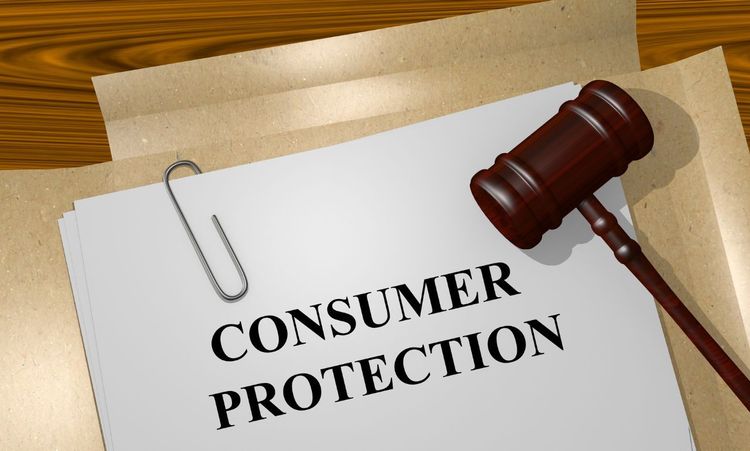Have you ever bought something online that looked perfect in the pictures but turned out to be a total disappointment when it arrived? You may have attempted to return it, only to discover that your rights weren't the same as those in another country. That's not bad luck—it's a reflection of how consumer protection laws vary across different countries.
In today's global marketplace, buying from anywhere in the world is as easy as clicking "Add to Cart," But the laws that protect you when things go wrong? They're anything but universal. From refund policies to privacy rights, what's legal and fair in one place might be a gray area somewhere else.
This isn't just a "lawyer problem." It affects every consumer, entrepreneur, and multinational brand. Understanding how these rules differ can help businesses avoid lawsuits and consumers prevent unpleasant surprises. So, let's break down how these laws work, where they differ, and how they're changing in our digital-first world.
Key Areas of Divergence
No matter where you live, consumer protection laws revolve around a few significant themes—safety, fairness, honesty, and remedies. Yet, how these ideas are interpreted can feel like night and day between countries.
Take the European Union (EU), for example. The EU treats consumer protection almost like a human right. Under its Consumer Rights Directive (2011/83/EU), you can cancel an online purchase within 14 days—no questions asked. That's pretty generous compared to the United States, where consumer protection is more fragmented. There, different federal agencies—like the FTC, FDA, and CPSC—handle separate areas of consumer safety and fairness.
Then there are countries like India or Kenya, where the laws have improved in recent years but face challenges in enforcement. The rules might appear strong on paper, but inconsistent awareness and limited resources often mean consumers are unsure how to use them effectively.
So while one country gives you a full refund for a faulty product, another might offer store credit—or nothing at all. The protection you receive essentially depends on where you are, not what went wrong.
Product Safety and Quality Standards
When it comes to product safety, the global landscape is uneven. The European Union sets the gold standard with its General Product Safety Directive, which requires products to meet stringent health and safety benchmarks before they reach the shelves. If companies break the rules, they can face hefty fines or even mandatory recalls.
The United States, on the other hand, leans toward a more reactive system. Agencies typically step in once harm is reported. It sounds risky, but it's rooted in the idea of personal responsibility and market-driven accountability. Remember the Samsung Galaxy Note 7 debacle? The recall that followed showed just how quickly U.S. regulators can act when safety becomes a public concern.
In Japan, things work differently again. Companies are expected to take initiative. If something goes wrong, they're required to report it right away. And because Japanese culture values corporate accountability, a formal apology can carry as much weight as a fine.
Compare that with developing countries, where weak border control allows counterfeit or substandard products to enter the market. For example, the Kenya Bureau of Standards (KEBS) constantly battles fake electronics flooding the market. The problem isn't just bad products—it's that consumers often can't tell which items are genuine until it's too late.
Regional Spotlights
The European Union
The EU's approach is almost textbook perfection. Its mix of strong directives and centralized enforcement makes it one of the safest places for consumers to be. Beyond refund rights and transparent pricing, consumers have access to the European Consumer Centres Network (ECC-Net), which facilitates the settlement of disputes across borders within the EU.
What's powerful about this system is how it treats all 27 member countries as part of one marketplace. If you buy something from France while living in Spain, you're still protected by a single legal standard. That consistency is a dream for both consumers and global retailers.
The United States
In the U.S., things get more complicated. The Federal Trade Commission (FTC) cracks down on deceptive advertising, while the Food and Drug Administration (FDA) manages labeling, and the Consumer Product Safety Commission (CPSC) focuses on unsafe goods. The challenge? There's no single overarching law—each sector handles its own.
This decentralized system is effective in certain cases. Class-action lawsuits, for instance, empower consumers to take collective action when big companies misbehave. However, protections vary by state. California's Consumer Privacy Act (CCPA) offers far more robust digital privacy rights than most other states. Even within a single country, your consumer experience depends on where you live.
Asia-Pacific
Australia has one of the most consumer-friendly systems in the world. The Australian Consumer Law (ACL) guarantees fair pricing, honest advertising, and clear refund policies across the nation. China, on the other hand, has made significant progress with its 2014 Consumer Protection Law, which strengthened online transparency and privacy rules. Still, rural enforcement remains hit-or-miss, creating a digital divide between urban and rural consumers.
Africa and Latin America
In Africa, countries like South Africa are leading the charge with comprehensive laws such as the Consumer Protection Act (2011). It guarantees fair treatment and honest business practices. Similarly, Brazil's Consumer Protection Code (CDC) has become the go-to model in Latin America.
Yet, enforcement remains inconsistent. Limited resources, bureaucracy, and a lack of consumer awareness often mean that laws fail to reach those who need them most.
Enforcement, Compliance, and Cross-Border Challenges
Having strong laws is one thing; enforcing them is another story. In many developing nations, enforcement agencies are underfunded or understaffed. Without regular inspections and public awareness campaigns, even the best-written laws lose their bite.
Cross-border trade makes this even trickier. Picture this: A Kenyan buyer orders a smartwatch from a Chinese seller through an online platform. The product arrives broken. Which country's laws apply—the one where it was bought or where it was sold? It's a legal gray zone that frustrates millions of consumers every year.
Organizations such as the OECD and UNCTAD have attempted to establish global guidelines for fair trade; however, implementation has been slow. There's still no universal framework to handle disputes that cross borders effectively.
Challenges for Multinational Firms
If you run a global brand, this patchwork of laws can feel overwhelming. A refund policy that complies with U.S. regulations might not meet EU requirements. Advertising that's legal in India might violate Canada's truth-in-marketing laws.
Tech giants like Apple have learned this the hard way. In 2011, the company was fined in Italy for misleading customers about warranty coverage. The incident became a case study in how even global leaders can trip over local regulations.
To avoid trouble, large firms now invest heavily in compliance teams and legal experts. Some even tailor their customer service policies region by region to match local expectations. The smartest ones see it not as a burden—but as a way to build trust.
Addressing Cross-Border Consumer Disputes
As online shopping crosses borders, disputes are becoming increasingly common. The EU's Online Dispute Resolution (ODR) platform has been a game-changer. It lets consumers file complaints electronically against sellers in any EU country—no law degree required.
Elsewhere, though, it's not as easy. The Asia-Pacific Economic Cooperation (APEC) has experimented with cross-border privacy frameworks, but adoption has been slow. The world lacks a truly global consumer court.
That's why many frustrated buyers turn to public pressure. Social media can now do what legal systems can't. A viral tweet or a YouTube rant can push brands to act faster than a formal complaint ever could.
Legal Precedents and Judicial Authorities in Shaping Consumer Protection
Court decisions have played a significant role in shaping the evolution of consumer laws. In the U.S., the Supreme Court has set powerful precedents on deceptive advertising and fair competition, and in India, landmark cases, such as Common Cause vs. Union of India (1991), expanded the definition of who qualifies as a "consumer," opening the door to stronger protections.
Across Europe, the Court of Justice of the European Union (CJEU) continuously reinterprets directives, ensuring that consumer laws adapt to new market realities. These evolving judgments keep the system flexible and responsive, rather than static and outdated.
Emerging Trends and the Evolving Future of Consumer Protection
The Digital Economy
The rise of e-commerce and social media marketing has significantly altered how consumers engage with brands. Today, your most significant risk isn't a defective product—it's how your personal data is used. That's why new regulations, such as the EU's Digital Services Act (2022), are holding platforms accountable for algorithmic transparency and misleading advertisements.
Sustainable Consumption
Consumers are becoming increasingly conscious about the origins of their products and the manufacturing processes used to create them. This has compelled lawmakers to incorporate sustainability into consumer protection. The EU's new eco-labeling standards are a prime example. Brands like Patagonia and IKEA, which build their marketing around ethical consumption, have become symbols of this new wave of conscious capitalism.
The Impact of Artificial Intelligence on Consumer Demand, Pricing, and Privacy Concerns
AI is changing everything—from how prices are set to how ads find us online. Recommendation engines predict what we'll buy before we even realize we want it. Convenient? Sure. But also concerning.
If AI can manipulate pricing or limit what you see, who's really in control—the consumer or the algorithm? Regulators are catching on. The EU AI Act (2024) now requires companies to disclose when their AI systems influence consumer decisions. The U.S. FTC has also warned that using AI to deceive or discriminate could violate existing laws.
AI's role in shaping consumer protection will grow—alongside debates about fairness, transparency, and consent.
Future Directions
Looking ahead, we're moving from reactive laws to proactive systems. Instead of waiting for problems, countries are starting to prevent them from occurring.
Expect to see more global cooperation, digital verification systems, and blockchain-backed transparency tools. Imagine receiving a digital receipt that automatically verifies whether a product complies with your country's laws before you make a purchase. That's not sci-fi—it's the next step in global consumer safety.
And if there's one golden rule? Transparency wins. Businesses that prioritize honesty and accountability not only avoid legal trouble but also build lifelong customer loyalty.
Conclusion
Consumer protection isn't just a set of legal rules—it's the foundation of trust in modern commerce. When you know you're protected, you buy with confidence. When companies understand the rules, they innovate responsibly.
Understanding how consumer protection laws vary across different countries isn't just useful—it's essential. Whether you're running a global brand or shopping online from your couch, understanding your rights (and the associated risks) can make all the difference.




